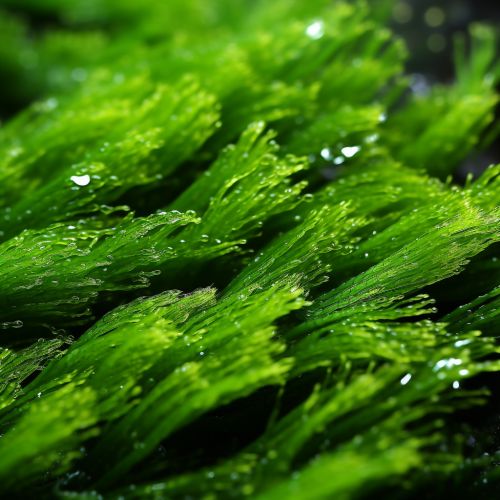Eukaryotic algae
Introduction
Eukaryotic algae are a diverse group of photosynthetic organisms that inhabit a wide range of environments, from freshwater and marine ecosystems to terrestrial habitats. They are characterized by their eukaryotic nature, meaning they have complex cells with a nucleus and other organelles. This distinguishes them from the simpler prokaryotic cyanobacteria, which are often colloquially referred to as blue-green algae.


Classification
The classification of eukaryotic algae has been a subject of much debate among phycologists. Traditionally, these organisms were grouped together based on shared characteristics, such as color (green, red, or brown) or the presence of certain pigments. However, with the advent of molecular techniques, it has become clear that these groups are not always monophyletic, meaning they do not always share a common ancestor.
As such, the classification of eukaryotic algae is now largely based on genetic data. This has led to the recognition of several major groups, including the green algae (Chlorophyta and Charophyta), red algae (Rhodophyta), brown algae (Phaeophyceae), diatoms (Bacillariophyta), and dinoflagellates (Dinophyta), among others. Each of these groups has unique characteristics that set them apart from the others.
Morphology and Structure
Eukaryotic algae exhibit a wide range of morphologies, from unicellular forms to complex multicellular structures. Unicellular algae, such as Chlamydomonas, are often flagellated and can move actively in the water. Colonial forms, such as Volvox, consist of many individual cells that are held together in a gelatinous matrix. Filamentous forms, such as Spirogyra, consist of long chains of cells, while multicellular forms, such as Ulva, have a more complex structure that can resemble that of higher plants.
Despite this diversity in form, all eukaryotic algae share certain structural features. They all possess a nucleus, which contains the organism's genetic material, and chloroplasts, which are the site of photosynthesis. Many also have additional organelles, such as mitochondria for energy production, and vacuoles for storage.
Photosynthesis and Pigments
Eukaryotic algae are photosynthetic organisms, meaning they can convert light energy into chemical energy through the process of photosynthesis. This process involves the use of light-absorbing pigments, primarily chlorophylls, which capture light energy and use it to convert carbon dioxide and water into glucose and oxygen.
Different groups of eukaryotic algae have different types of chlorophylls and other pigments, which give them their characteristic colors. For example, green algae have chlorophylls a and b, and carotenoids, which give them their green color. Red algae have chlorophylls a and d, and phycobiliproteins, which give them their red color. Brown algae have chlorophylls a and c, and fucoxanthin, which gives them their brown color.
Reproduction
Eukaryotic algae can reproduce both sexually and asexually. Asexual reproduction is often the primary mode of reproduction and can occur through various means, including binary fission, budding, fragmentation, and the formation of spores. Sexual reproduction, when it occurs, can be isogamous (involving similar-sized gametes), anisogamous (involving different-sized gametes), or oogamous (involving a large, non-motile egg and a small, motile sperm).
Ecological Role
Eukaryotic algae play a critical role in many ecosystems. As primary producers, they form the base of the food web in many aquatic environments. They also contribute significantly to global carbon cycling and are important producers of oxygen.
In addition to their ecological role, eukaryotic algae have numerous applications. They are used in the production of biofuels, as a source of food and feed, in the pharmaceutical industry, and in wastewater treatment, among other uses.
